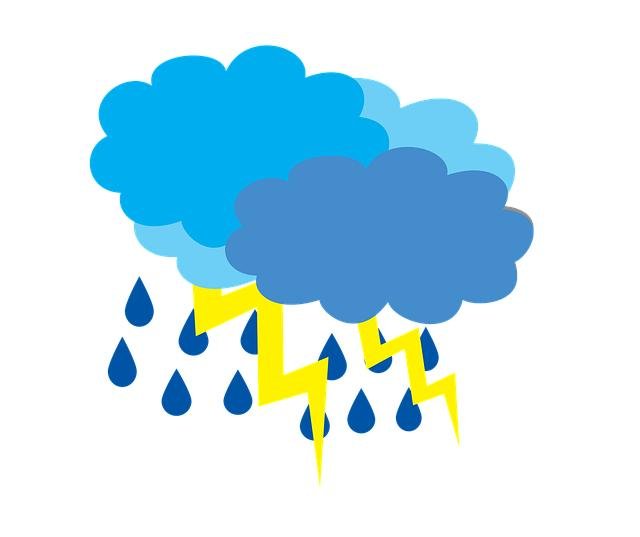Beneath the vast expanse of the Atlantic Ocean, nature’s most formidable forces quietly gather, their paths and power meticulously tracked by scientists and meteorologists alike. The National Hurricane Center’s digital resource, accessible at NOAA’s National Hurricane Center, offers a vital glimpse into this dynamic world. This data feed provides real-time insights into tropical cyclone activity, serving as an essential tool for forecasting, preparedness, and research. In this article, we explore the significance of this digital window into the hurricane season, shedding light on how raw data transforms into life-saving information.

Understanding the Latest Tropical Cyclone Data from NOAA’s National Hurricane Center
To help you grasp the essential aspects, here’s a quick breakdown of the primary data points often featured in reports:
- Maximum Sustained Winds: Indicates the storm’s strength and potential damage.
- Central Pressure: Lower values signify more intense cyclones.
- Forward Speed: Determines how fast the cyclone is moving over affected regions.
- Track Forecast: The projected path helps anticipate affected areas and timing.
| Parameter | Typical Range | What It Means |
|---|---|---|
| Wind Speed (mph) | 39-157+ | From tropical storm to major hurricane |
| Pressure (mb) | 920-1010 | Lower pressure equals stronger storm |
| Movement (mph) | 5-25 | Speed of storm progression |
Staying updated with this information, as soon as it’s released, can make a significant difference in decision-making for both individuals and communities confronting potential cyclone impacts.

Analyzing the Impact of Current Weather Patterns on Coastal Regions
Current weather patterns across coastal regions are showcasing increased variability, heavily influenced by shifting ocean currents and atmospheric conditions. These fluctuations have resulted in a mix of prolonged dry spells alongside sporadic intense rainfall events. The interplay of warm sea surface temperatures with evolving storm trajectories creates a dynamic environment, amplifying risks such as flooding and shoreline erosion. Local communities are responding by bolstering infrastructure resilience and enhancing early-warning systems to cope with these unpredictable conditions.
Key impacts observed include:
- Rising tidal surges causing temporary inundation of low-lying areas
- Disruption of marine ecosystems linked to sudden temperature shifts
- Increased coastal wind intensities affecting construction and agriculture
| Region | Prevailing Condition | Primary Concern |
|---|---|---|
| Eastern Seaboard | Warm currents + increased storms | Flooding, infrastructure damage |
| Gulf Coast | Erratic rainfall patterns | Erosion, habitat disruption |
| West Coast | Cooler ocean surface temps | Reduced storm formation |

Key Safety Measures and Preparedness Tips for Residents in Hurricane-Prone Areas
Preparing for a hurricane involves more than just gathering supplies; it’s about building a mindset of resilience and readiness. Residents should prioritize creating a comprehensive emergency kit that includes essentials such as bottled water, non-perishable food, flashlights, batteries, and first-aid supplies. Equally important is to secure important documents in waterproof containers and develop an evacuation plan that details escape routes and a designated meeting point for family members. Staying informed through reliable sources and signing up for local emergency alerts ensures timely updates on storm developments.
Practical tips to enhance your hurricane preparedness:
- Trim trees and secure outdoor furniture to prevent damage from strong winds.
- Install storm shutters or board up windows to protect your home’s interior.
- Keep your vehicle fueled and ready for evacuation if necessary.
- Designate a safe room inside your home, preferably an interior room without windows.
- Review insurance policies and understand what coverage you have for flood and wind damage.
| Item | Recommended Quantity |
|---|---|
| Bottled Water | 1 gallon per person per day (3-day minimum) |
| Non-perishable Food | 3-day supply |
| Flashlights & Batteries | At least 2 of each |
| First Aid Kit | 1 kit per household |

Interpreting Forecast Models to Make Informed Decisions During Storm Season
Storm season brings uncertainty, but understanding forecast models unlocks the power to anticipate and prepare effectively. These models, generated by meteorological agencies like the National Hurricane Center, integrate countless environmental variables, from wind shear to ocean temperatures, to simulate storm paths and intensities. However, no single model is definitive-successful interpretation hinges on comparing outputs, monitoring consensus across models, and heeding the underlying assumptions that influence predictions.
Key strategies to translate complex model data into actionable insights include:
- Review multiple models to identify common trajectories and potential divergences.
- Understand probabilistic forecasts and the meaning of ‘cones of uncertainty.’
- Stay current with updates, as model outputs evolve with new data inputs.
| Model Type | Characteristic | Best For |
|---|---|---|
| GFS | Global, broad scope | Long-range forecasting |
| ECMWF | High accuracy, European model | Track predictions |
| HWRF | Focused on hurricanes | Intensity forecasting |
In Retrospect
As we navigate the ever-evolving landscape of weather patterns and tropical activity, resources like the National Hurricane Center’s data feed remain invaluable. The link to https://www.nhc.noaa.govnhc_ep2.xml offers a direct conduit to the latest updates, ensuring that communities, researchers, and enthusiasts alike stay informed and prepared. In a world where nature’s moods can shift swiftly, staying connected to reliable information is our best tool for awareness and resilience. Whether you’re tracking a brewing storm or simply seeking to understand the forces at play, this resource stands as a steadfast beacon amid the swirling currents of meteorological change.

